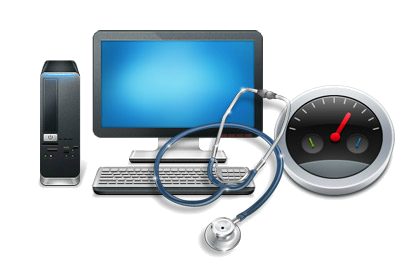There’s a lot of talk about “Intelligent” computers. But actually, computers aren’t intelligent: they’re just very good at performing tasks very quickly. Without speed, then, a computer can’t effectively do its job. If your computer seems like it’s walking where you’d like it to sprint, here are a few changes you can make.
First, you’ll need to do some spring cleaning. Go to the Control Panel and find the “Programs and Utilities” icon. In this window, you’ll see a list of installed applications on your computer. Uninstall any ones that you don’t want or don’t use anymore. This will free up some space on your hard drive. Try to keep at least 15% of your hard drive empty at any given time.
Next, check your Virtual Memory settings. Increasing Virtual Memory can help relieve any bottlenecks you’re running into, taking some of the strain off your installed memory. Go to your Control Panel, find “System,” and select the Virtual Memory option. A good rule of thumb for setting maximum virtual memory is to take your installed memory (Also known as RAM) and add 300 megabytes.
Next, you’ll need to see what programs are slowing down your computer. Having multiple programs at once can slow down even a powerful computer. So open the Start menu, select “Run” and type in “MSConfig.” Click the “Startup” tab. This will show you ever program that launches when Windows boots up. Get rid of the ones you don’t want or don’t need, and you’ll find your computer running with markedly improved speed next time you restart.
There’s also the matter of your actual computer hardware. Your computer’s hardware has definite limits: it can’t work above 100%. That means that there are some programs and settings that will slow down your system no matter what you do. Get a full list of your system’s hardware specifications (You can find that in the Control Panel, under “System”) and compare it to the minimum system requirements for your various programs. If you find that your system is below the minimum system requirements, there’s nothing to do but either upgrade your computer, or downgrade your software.
Speaking of hardware, one surefire way to increase speed is to upgrade your computer. While the word “Upgrade” is often associated with dropping huge amounts of money, that doesn’t have to be the case. Your computer’s Read-Only Memory, or RAM, can be upgraded fairly inexpensively. You can easily double your available RAM for under a hundred dollars. And even if you’ve never opened up your computer before, its actually fairly easy to install: just find the slot, snap it into place, and close your computer back up.
The other piece of hardware that effects your computer’s speed is the CPU, also called the processor. Unfortunately, processors can be moderately to very expensive for a computer part. Also, replacing one is a task best left to someone experienced in repairing computers. In addition, many computers, desktop and notebook alike, don’t allow processor upgrades at all. Often, the processor is built right into the motherboard.

